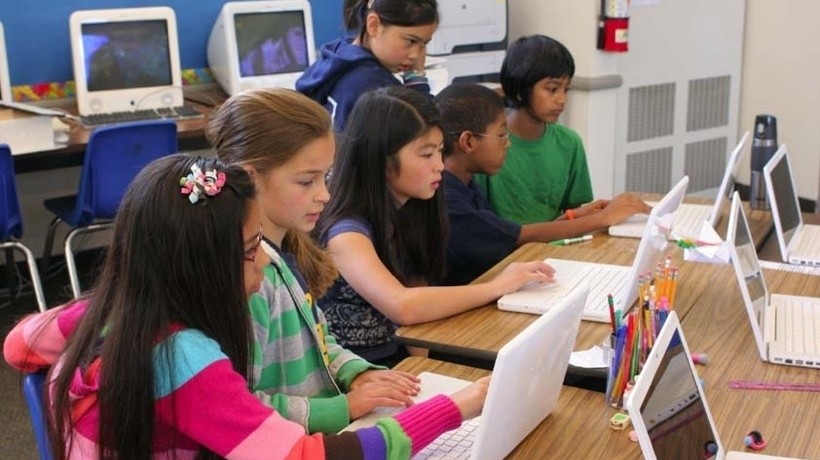How To Integrate Technology For Successful Project-Based Learning
Successful project-based learning (PBL) seeks to develop models for deeper learning in school and college by engaging students in projects. This method blends classroom teaching, technology use, and problem solving through projects and real-world challenges. PBL marks a point of departure from traditional classroom learning. It requires schools to invest resources into redesigning curriculum and making outreach efforts to incorporate real-world challenges and business partnerships. Successful project-based learning also takes major investment in terms of time and effort from students and teachers.
The risk in adopting project-based learning that prevents some educators from making the leap is that failure to achieve deeper learning will be at the cost of the learning that could have been had in the traditional classroom situation, but there are tools and techniques that can greatly reduce the chances of this outcome.
An important aspect of project-based learning is that it should keep the student at the center of learning design. Students should be actively involved in the direction and management of the course, and should feel directly invested in the course activity. It is also beneficial to incorporate a technology platform that succeeds in encouraging students’ curiosity and that helps them take charge of the course activity. The technology platform should also enable teachers and parents to effectively track the student’s course progress. The ability of teachers to use the technology platform greatly determines the success of blended learning. For this reason enhancing the capability of teachers to effectively use technology is very important.
Videos can be used for teacher technology training and for providing valuable feedback. In a survey of 1500 educators, students, and Instructional Designers on the use of video in education:
- 88% said that it boosts student achievement levels.
- 76% said that it increases retention rates.
To ensure improvement in student performance, PBL should be underlied by a robust implementation of technical solutions. Here are 7 technical solutions that can be used for implementing successful project-based learning pedagogy.

1. Learning Management Systems
A good Learning Management System (LMS) makes it easier for teachers to communicate course content with students effectively. Using a Learning Management System, teachers can edit course content as the learning project evolves, therefore allowing for flexible pedagogy. Learning Management Systems are also able to collect learner data across different activities. Learner data handling protocols such as SCORM and Tin Can API ensure that all learning activities that students undertake outside the classroom can be recorded into a Learning Record Store (LRS). Learning outside the classroom can therefore be logged into the Learning Management System through the use of Tin Can API.
2. Flipped Classroom Learning
In the flipped classroom method, basic instructions are given to students before class through videos. By using videos for instruction before class, the classroom discussion would be better focused on problem-solving and critical thinking, encouraging an attitude of sustained inquiry. Louis Deslauriers et al published findings from 850 Physics Undergrads at University of British Columbia, in which learners in the traditional classroom technology had an average score of 41%, whereas learners in the flipped classroom program had an average score of 74%.
3. Video Quiz
In-video quizzes can be integrated to online videos immediately after a course topic is discussed. Problem-solving immediately after concept introduction would lead to better knowledge retention, helping learners master the core content. Quizzes increase the learner’s time on the task, and encourage more time for practice. Better knowledge retention means that classroom discussions will be much more productive. Cummins et al at Cambridge University found that there was a 71% engagement with in-video questions, with a rate of 1 question per 8.7 minutes of video. More details on integrating video quizzes can be found here.
4. Learner Analytics And Data Visualization
Learner data needs to be communicated to teachers, students, and parents clearly, so that actionable insights are gained for course feedback. Effective communication is one of the most important measures to ensure the success of project-based learning.
5. Course Gamification
Course gamification is the technique by which learners are assigned points based on activities completed within the course. On the basis of the points systems, students are assigned levels or places on leaderboards. This process essentially leverages learner’s desire for socializing, competition, achievement and status for more effective learner engagement.
6. Whiteboard Animation Videos
Whiteboard Animation videos are a great tool to explain complex concepts to students. The verbal cues in the video help guide the learner through the concept, while the visual part enables them to create a map of the new knowledge. Tools that can be used for whiteboard animation include VideoScribe and Adobe After Effects.
7. Training Teachers And Students For Software Use
Screencasting is a great way for training students and teachers with use of software for online learning. In screencasting instructions are given to learners along with a video of the computer screen. This guides learners on how softwares and computer tools are used. Screencasting is very cost-effective as well, as you only need to add audio besides the screencast to demonstrate the use of computer. Some free screencasting tools available online are Ezvid and Screenr, while professional video editing softwares such as Screenflow and Camtasia allow users to add voiceovers and text to the screencast video. Here is a detailed guide on methods to record and create course videos.
Conclusion
John Hattie, while analyzing different pedagogy methodologies in his book “Visible Learning” has said the following about use of technology in learning:
My own view is that, like many structural innovations in education, computers can increase the probability of learning, but there is no necessary relation between having computers, using computers, and learning outcome.
Thus, the idea of this post was to articulate how a combination of technologies should be used effectively to ensure that project-based learning is successful.
Questions, feedback, and suggestions are greatly welcome in the comments section below.









